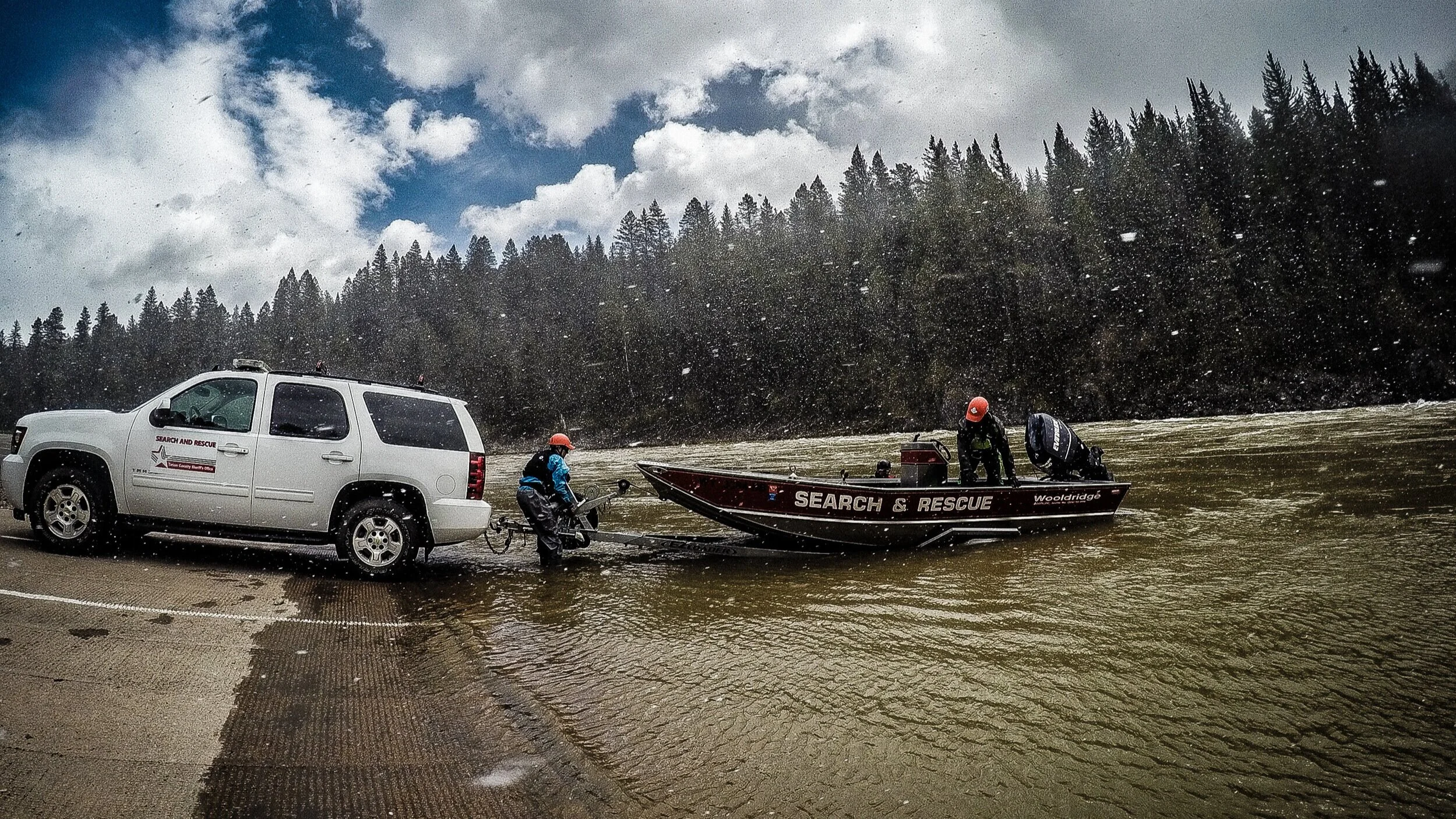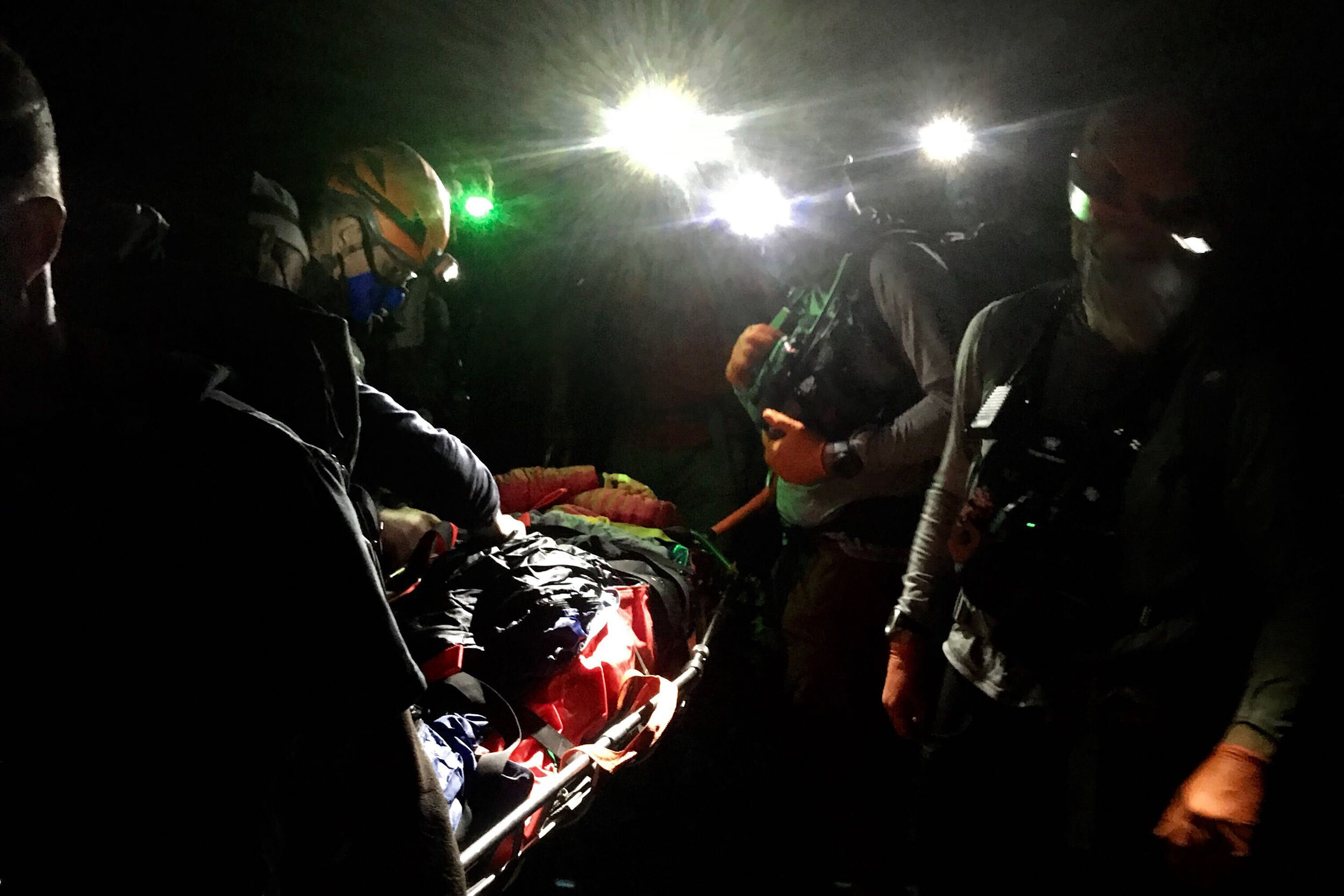Volunteer team is just one of four organizations in the U.S. to operate the heli-based search system
Over the years, Teton County Search and Rescue has consistently sought ways to evolve its programs and find the latest and greatest advancements in search technology. The team recently got a boost in this area by obtaining the RECCO SAR Helicopter Detector. TCSAR is now just one of four teams in the U.S. to utilize the system, which allows a helicopter to swiftly search a large area for a RECCO tab on someone’s person or even pick up incidental electronics.
The RECCO SAR Helicopter Detector in action during a recent TCSAR training mission. Photo: TCSAR
Many backcountry users are familiar with RECCO, a Swedish company founded in 1983 that makes small passive transponders that are picked up by a RECCO detector. Over the years, more than 125 outdoor brands—such as Arc’teryx, Patagonia, Salomon, and Atomic—have included these small RECCO reflectors in their products. Many brands are now including the system in summer and fall products, like bike helmets, to make it relevant year-round.
It’s important to note that the reflectors do not take the place of an operating avalanche beacon. The reflectors are passive, so there is no reciprocal search function or other use by the owner. It simply allows someone to be found with a corresponding RECCO detector. Most commonly, ski patrols across the world use hand-held detectors to conduct searches.
Where TCSAR gets a lift with the SAR Helicopter Detector is in how much ground it can cover in a short amount of time during a search. The detector looks like a 174-pound drum and hangs 15 meters (about 49 feet) below the helicopter. Flying 300 feet above the ground at 60 mph, the detector scans 600 square feet every second.
“One of the ideal applications would be during an inbounds avalanche with multiple burials where it’s assumed that not everyone is wearing an avalanche beacon,” says TCSAR Chief
Advisor Cody Lockhart. Because the drum can pick up incidental electronics, it could also be used to search a large wilderness area, such as the Gros Ventre during hunting season or Cache Creek during bike season.
The RECCO SAR Helicopter Detector is extremely accurate and swiftly covers an enormous area. PHOTO: TCSAR
“It operates like a grid pattern, essentially searching an entire football field at a time, till we get that signal hit,” says TCSAR pilot Steve Wilson. “Then you do a fine grid search. It’s extremely accurate.”
The SAR Heli Detector is one of three helicopter-mounted search mechanisms used by TCSAR. The team also uses a heli beacon, which can pick up avalanche transceivers and is often used to search debris piles after a slide in the backcountry, and there’s Lifeseeker, an aerial cellular transmitter that can locate mobile phone signals even when there’s no cell service.
The particulars of the incident on the ground will determine which tool the team uses. But it helps the team and community to have so many search options available. Thanks to RECCO for supplying the system and for the partnership.











